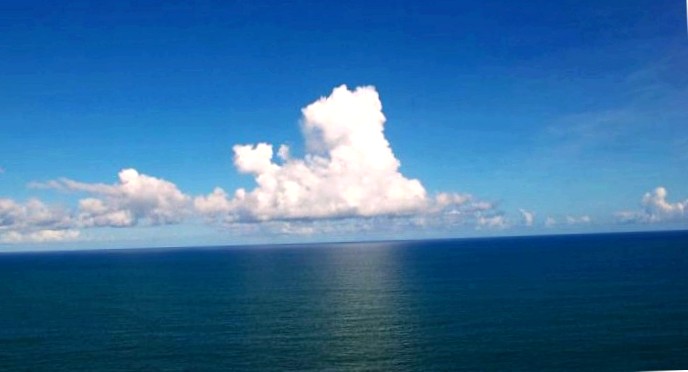Polluted and poisoned – landfill ocean

Atlantic. Photo: tiago fioreze / CC BY-SA 3.0
Phosphate and nitrate enrichment unbalances the ecosystem
Most of the pollutants and foodstuffs released on land end up in the sea sooner or later. There are not only the residues of fertilizers. It also includes inorganic and organic nitrogen and phosphate compounds from sewage works, municipal, domestic and industrial wastewater from the pulp, chemical and food industries and aquaculture plants, as well as emissions and wastewater from road transport, and also from the combustion of fossil fuels. A small portion, such as exhaust from shipping, is released directly into the ocean.
For years, researchers have been observing increasing nitrogen inputs into the coastal waters of the atlantic, the north and baltic seas and the mediterranean sea. The open ocean absorbs nitrogen primarily from the air. The north pacific in particular suffers from this pollution. Nitrogen oxides are blown from industrial centers not only inland, but also across the open sea, and are also emitted from agriculture.
A korean research team investigated the inputs of nitrogen and phosphorus in various oceans. The evaluation of an analysis of thousands of water samples showed that the input of nitrogen has increased massively within the last 40 years. With foreseeable consequences: too much nitrogen and phosphorus in the ocean leads to increased algae growth.
Plants sink to deeper zones and are degraded, with decomposing bacteria consuming the oxygen in the water. As a result, coarse oxygen-depleted death zones form on the ocean floor. Shocking, though not surprising, is the realization that humans are responsible for about one-third of the nitrogen absorbed in the ocean.
The oceanographer kitack lee predicts on the basis of projections further increasing nitrogen inputs until the year 2050. Because of this, the nitrate-phosphorus ratio in the pacific ocean will shift. This changes the composition of the phytoplankton – and in the long run the overall structure of the ecosystem. According to recent studies, the north american atlantic, the baltic sea and the mediterranean sea are increasingly suffering from nitrogen deposition via the atmosphere and rivers.
Phosphate degradation destroys nature
Phosphorus is the basis for all life on earth. It is a vital element, an essential nutrient for all living things and indispensable for the growth of plants. Among other things, phosphate is a component of DNA. In nature, phosphate in organic and inorganic form enters into all possible compounds.
Every year, around 160 million tons of phosphate are mined in the world. If consumption remained constant, the reserves would last another 100 years. But the demand for phosphorus grows with food production. Because processing is becoming more and more expensive, experts fear that phosphate earth could already become scarce in about 20 years. But industry also uses phosphorus – for example in the production of batteries.
For a long time, people have been searching for the last phosphate deposits – even in remote corners of the world. This is how australian representatives of the dung industry found phosphate on the pacific atoll of makatea. Phosphate was mined here as early as the 1950s and 1960s – a third of the once pristine island was destroyed and poisoned. Most residents fall in love with their home.
After mining was stopped, the island not only recovered within fifty years, but also developed into a true natural paradise. Now the threat of overexploitation and destruction is renewed. This time, the residents do not want to stand idly by. In an online petition, they address their protest to the minister of the environment and the president of french polynesia.
There have long been methods for recovering this precious raw material. This is how phosphate can be recovered from the ashes by burning clear sludge. With the help of modern technology, phosphorus is filtered out of clear sludge and made usable for agriculture.